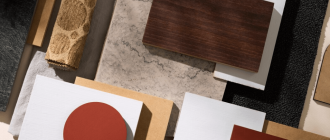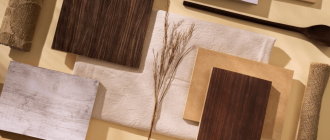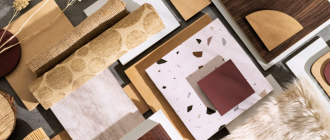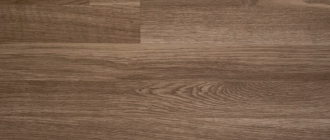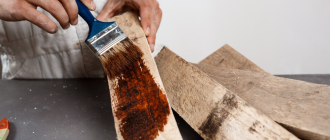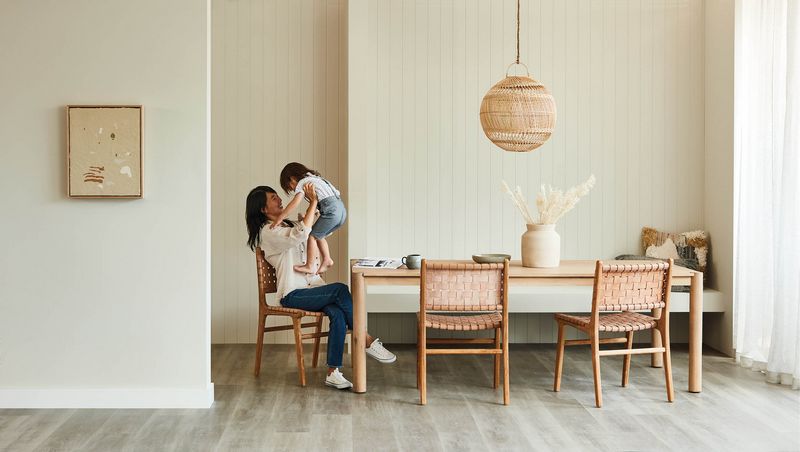
Top Flooring Options to Promote Children’s Health and Safety
When it comes to creating a safe and healthy environment for our children, every detail matters. One often overlooked aspect is the type of flooring we choose for our homes. Many conventional flooring materials can release harmful chemicals into the air, posing potential health risks for our little ones. Therefore, it is essential to make informed decisions and opt for flooring options that are not only visually appealing but also promote a healthy indoor environment.
Hardwood flooring is a popular choice among parents who prioritize health and sustainability. Made from natural materials, such as oak, maple, or bamboo, hardwood floors are free from toxins and harmful substances. They are also easy to clean and maintain, making them an excellent choice for busy households. Additionally, hardwood floors are durable and long-lasting, providing a safe and comfortable surface for children to play on.
Cork flooring is another healthy choice for children’s rooms. This natural and renewable material is derived from the bark of cork oak trees. Cork flooring is not only eco-friendly but also provides excellent insulation and sound absorption properties. It is soft underfoot, making it comfortable for children to crawl and play on. Furthermore, cork flooring is resistant to mold, mildew, and allergens, making it a great option for children with allergies or asthma.
What is the healthiest type of flooring?
When it comes to choosing flooring for your children’s space, it is important to consider the healthiest options available. The healthiest type of flooring is one that is made from natural and non-toxic materials.
Hardwood flooring is often considered one of the healthiest options as it is made from solid wood and does not contain any harmful chemicals or toxins. It is also easy to clean and maintain, which is important when it comes to keeping a child’s space clean and healthy.
Cork flooring is another healthy option as it is made from the bark of the cork oak tree. It is naturally resistant to mold, mildew, and bacteria, making it a great choice for children with allergies or asthma. Cork flooring is also soft and comfortable underfoot, providing a cushioned surface for children to play on.
Linoleum flooring is a natural and environmentally friendly option that is made from linseed oil, cork powder, and wood flour. It does not contain any harmful chemicals or toxins and is biodegradable. Linoleum flooring is also easy to clean and maintain, making it a great choice for children’s spaces.
Finally, natural fiber carpets, such as wool or sisal, are also considered to be a healthy flooring option. These carpets are made from natural materials and do not contain any harmful chemicals. They are also hypoallergenic and resistant to mold and mildew.
Overall, the healthiest type of flooring for children is one that is made from natural and non-toxic materials. Hardwood, cork, linoleum, and natural fiber carpets are all great options to consider when creating a healthy and safe space for your children.
Hardwood, bamboo, cork, concrete
When it comes to choosing healthy flooring options for children, hardwood, bamboo, cork, and concrete are all great choices.
- Hardwood: Hardwood floors are a popular choice for many families due to their durability and natural beauty. They are easy to clean and maintain, making them a great option for children who may have allergies or sensitivities.
- Bamboo: Bamboo flooring is an eco-friendly option that is becoming increasingly popular. It is a sustainable material that is highly durable and resistant to scratches and stains. Bamboo is also easy to clean and maintain, making it a great choice for children’s rooms.
- Cork: Cork flooring is another eco-friendly option that is perfect for children’s rooms. It is soft and comfortable underfoot, making it ideal for play areas. Cork is also naturally resistant to mold, mildew, and pests, making it a healthy choice for children with allergies or asthma.
- Concrete: While concrete may not be the first material that comes to mind when thinking of children’s flooring, it can actually be a great option. Concrete floors are durable, easy to clean, and can be sealed to prevent stains. They are also cool in the summer, which can be beneficial in warmer climates.
When choosing any of these flooring options, it is important to ensure that they are properly installed and finished to prevent any potential health hazards. Additionally, it is always a good idea to use area rugs or mats in play areas to provide extra cushioning and protection for children.
Natural linoleum, rubber
Natural linoleum and rubber are both excellent choices for healthy flooring options for children.
Linoleum is made from natural materials such as linseed oil, cork powder, wood flour, and tree resins. It is a durable and resilient flooring option that is also biodegradable and low in volatile organic compounds (VOCs). Linoleum is easy to clean and maintain, making it a practical choice for busy households with children. It is also available in a wide range of colors and patterns, allowing for creative and fun design options in children’s rooms.
Rubber flooring, on the other hand, is made from recycled rubber, making it an eco-friendly choice. It is soft and comfortable underfoot, providing a cushioned surface that is gentle on joints and reduces the risk of slips and falls. Rubber flooring is also resistant to moisture and mold, making it a hygienic option for children’s play areas. It is easy to clean and maintain, and it comes in a variety of colors and textures to suit any design aesthetic.
Both natural linoleum and rubber flooring are hypoallergenic and non-toxic, making them safe choices for children who may have allergies or sensitivities. They are also durable and long-lasting, making them a practical investment for families. Whether you choose natural linoleum or rubber, you can feel confident that you are providing a healthy and sustainable flooring option for your children.
Carpet with natural fibers like wool
Carpet made from natural fibers like wool is a healthy flooring choice for children. Wool is a renewable and biodegradable material that is also hypoallergenic, making it perfect for children with allergies or asthma.
Wool carpet is naturally resistant to stains, mold, and mildew, making it easier to keep clean and maintain a healthy indoor environment. It also has excellent insulation properties, keeping the room warm in winter and cool in summer.
In addition to being a sustainable and healthy choice, wool carpet is also durable and long-lasting. It can withstand heavy foot traffic and is resistant to crushing and matting. This makes it a great option for children’s playrooms and bedrooms where the carpet will be subjected to frequent use.
When choosing carpet with natural fibers like wool, it is important to look for products that are certified by independent organizations such as the Carpet and Rug Institute’s Green Label Plus program. This certification ensures that the carpet meets strict standards for indoor air quality and low emissions of volatile organic compounds (VOCs).
Overall, carpet made from natural fibers like wool is an excellent choice for parents who prioritize the health and well-being of their children. It provides a safe, comfortable, and sustainable flooring option that is both stylish and functional.
Ceramic, stone tile
Ceramic and stone tile flooring is a popular choice for parents who want a healthy and durable option for their children’s rooms. These types of flooring are made from natural materials, which means they are free from harmful chemicals and toxins that can be found in some other flooring options.
One of the main benefits of ceramic and stone tile flooring is that they are easy to clean and maintain. They are resistant to stains, spills, and scratches, making them ideal for high-traffic areas like children’s rooms. Additionally, they are hypoallergenic, which means they do not trap dust, pollen, or pet dander, making them a great choice for children with allergies or asthma.
Ceramic and stone tile flooring also has excellent thermal properties, helping to keep the room cool in the summer and warm in the winter. This can be especially beneficial for children who spend a lot of time playing on the floor.
Another advantage of ceramic and stone tile flooring is their longevity. With proper care and maintenance, they can last for decades, making them a cost-effective choice in the long run. Additionally, these types of flooring are available in a wide range of colors, patterns, and textures, allowing you to create a unique and stylish look in your child’s room.
However, it’s important to note that ceramic and stone tile flooring can be hard and cold underfoot, which may not be comfortable for young children who like to play on the floor. To address this issue, area rugs or foam mats can be used to provide cushioning and insulation.
Uceramic and stone tile flooring is a healthy and durable choice for children’s rooms. They are free from harmful chemicals, easy to clean, hypoallergenic, and have excellent thermal properties. With their longevity and versatility, they can create a safe and stylish environment for your child to play and grow.
Which flooring materials contain the lowest VOCs and formaldehyde?
When it comes to choosing flooring materials for children’s spaces, it is important to consider the levels of volatile organic compounds (VOCs) and formaldehyde present in the materials. VOCs and formaldehyde are chemicals that can be emitted from certain flooring materials and have been linked to various health problems, especially in children.
Fortunately, there are flooring options available that contain lower levels of VOCs and formaldehyde, making them healthier choices for children. Here are some of the best flooring materials in terms of low VOC and formaldehyde emissions:
1. Cork Flooring: Cork flooring is a natural and sustainable option that is known for its low VOC emissions. It is made from the bark of the cork oak tree and does not contain formaldehyde.
2. Bamboo Flooring: Bamboo flooring is another eco-friendly option that has low VOC emissions. However, it is important to choose bamboo flooring that is certified as formaldehyde-free.
3. Hardwood Flooring: Solid hardwood flooring is a timeless and durable option that can have low VOC emissions if it is finished with water-based or low-VOC finishes. It is important to choose hardwood flooring that is certified as formaldehyde-free.
4. Linoleum Flooring: Linoleum flooring is made from natural materials such as linseed oil, cork powder, and wood flour. It has low VOC emissions and does not contain formaldehyde.
5. Natural Stone Flooring: Natural stone flooring, such as marble or granite, is a natural and non-toxic option that does not emit VOCs or formaldehyde.
When selecting flooring materials for children’s spaces, it is important to look for certifications such as FloorScore or GreenGuard, which indicate that the flooring has been tested for low VOC emissions and formaldehyde content. Additionally, proper installation and ventilation are key to minimizing the release of VOCs and formaldehyde from flooring materials.
By choosing flooring materials with low VOC and formaldehyde emissions, parents can create a healthier indoor environment for their children.
Solid hardwood, not engineered
When choosing flooring for your child’s room, solid hardwood is a great option to consider. Unlike engineered hardwood, which is made up of multiple layers of wood veneer and plywood, solid hardwood is made from a single piece of wood. This makes it more durable and resistant to wear and tear, making it a perfect choice for active children.
Another advantage of solid hardwood is its ability to be refinished multiple times. As children grow and their tastes change, you may want to update the look of their room. With solid hardwood, you have the option to sand down the surface and apply a new finish, giving the flooring a fresh new look without the need for replacement.
Additionally, solid hardwood is a natural and eco-friendly choice for your child’s room. It is made from sustainable sources and does not contain any harmful chemicals or toxins that can be found in other types of flooring. This can give you peace of mind knowing that your child is not being exposed to any potentially harmful substances while playing or sleeping on the floor.
| Pros | Cons |
|---|---|
| Durable and long-lasting | Can be more expensive than other options |
| Can be refinished multiple times | May require professional installation |
| Natural and eco-friendly | Not suitable for areas with high moisture levels |
Usolid hardwood is a healthy and practical flooring choice for your child’s room. Its durability, ability to be refinished, and eco-friendly nature make it a great investment that will last for years to come.
Tile, stone, concrete floors
Tile, stone, and concrete floors are excellent choices for parents looking for healthy flooring options for their children. These types of flooring are durable, easy to clean, and resistant to moisture and stains.
Tile flooring, whether made of ceramic, porcelain, or natural stone, offers a wide range of design options, allowing parents to create a beautiful and unique space for their children. Additionally, these types of flooring are hypoallergenic, making them a great choice for kids with allergies or asthma.
Stone flooring, such as marble or granite, is known for its elegant and timeless look. It is also highly durable and can withstand heavy foot traffic, making it suitable for children’s play areas. Concrete floors, on the other hand, are incredibly durable and can be stained or polished to create a stylish and modern look.
Another advantage of tile, stone, and concrete floors is that they do not trap dust, dirt, or allergens, making them easy to clean and maintain. Regular sweeping and mopping are usually sufficient to keep these floors looking their best.
However, it is important to note that tile, stone, and concrete floors can be cold and hard underfoot. To make these floors more comfortable for children, area rugs or foam mats can be added to create a soft and cushioned play area.
Overall, tile, stone, and concrete floors are excellent choices for parents who prioritize cleanliness, durability, and allergen-free environments for their children. With proper care and maintenance, these flooring options can provide a healthy and stylish foundation for any child’s room or play area.
Seeking low-VOC products
When selecting flooring materials for children’s rooms, it is important to consider the level of volatile organic compounds (VOCs) emitted by the products. VOCs are chemicals that can be released into the air and may cause short-term and long-term health effects, especially in children.
To ensure a healthy indoor environment, it is recommended to choose low-VOC flooring options. These products are specifically designed to minimize the release of harmful chemicals into the air. Look for flooring materials that have been certified as low-VOC by reputable organizations such as GREENGUARD or FloorScore.
Some examples of low-VOC flooring options include natural materials such as hardwood, cork, and bamboo. These materials are typically treated with natural oils or finishes that have low levels of VOCs. Additionally, carpet tiles made from recycled materials can also be a good choice, as they often have lower VOC emissions compared to traditional carpets.
When shopping for flooring products, be sure to check the product labels or ask the manufacturer for information about VOC emissions. It is also helpful to request a material safety data sheet (MSDS) which provides detailed information about the chemical composition of the product.
By seeking low-VOC flooring products for children’s rooms, you can create a healthier and safer environment for your little ones to play and grow.
Asking about certifications
When choosing flooring options for children, it is important to ask about certifications. Certifications can provide reassurance that the flooring meets certain health and safety standards.
One important certification to look for is the FloorScore certification. This certification ensures that the flooring has been tested and certified for low emissions of volatile organic compounds (VOCs). VOCs are chemicals that can be released from certain materials and can contribute to indoor air pollution. Choosing flooring with the FloorScore certification can help maintain a healthier indoor air quality for children.
Another certification to consider is the GreenGuard certification. This certification focuses on indoor air quality and ensures that the flooring has been tested for low chemical emissions. It also takes into account the impact on human health and the environment. Choosing flooring with the GreenGuard certification can provide peace of mind that the flooring is less likely to release harmful chemicals into the air.
In addition to certifications, it is also important to inquire about the materials used in the flooring. Opting for natural and sustainable materials, such as bamboo or cork, can be a healthier choice for children. These materials are renewable and typically have lower VOC emissions compared to synthetic materials. Asking about the materials used in the flooring can help make an informed decision.
Overall, asking about certifications and the materials used in flooring options for children can help ensure a healthier environment for them to play and grow. By choosing flooring with certifications like FloorScore and GreenGuard, and opting for natural and sustainable materials, parents can create a safer and healthier space for their children.
Are natural fiber carpets like wool and jute better for indoor air quality?
When it comes to choosing flooring for children, indoor air quality is an important consideration. Natural fiber carpets, such as wool and jute, are often considered to be better for indoor air quality compared to synthetic carpets.
One reason why natural fiber carpets are thought to be better for indoor air quality is that they are made from organic materials. Wool is a natural fiber that is derived from sheep, while jute is a plant fiber. These natural fibers do not contain harmful chemicals or toxins that can be found in synthetic carpets.
In addition, natural fiber carpets are known to have a low VOC (volatile organic compounds) emission. VOCs are chemicals that can be released into the air from certain materials, including synthetic carpets. High levels of VOCs can contribute to indoor air pollution and may cause health problems, especially for children who have developing respiratory systems.
Furthermore, natural fiber carpets have the ability to absorb and trap pollutants in the air, acting as a natural air filter. This can help to improve indoor air quality by reducing the presence of allergens and other harmful particles in the air.
However, it’s important to note that even natural fiber carpets can contribute to indoor air pollution if not properly maintained. Regular vacuuming and cleaning are necessary to remove dust, dirt, and other pollutants that can accumulate in the carpet fibers.
Unatural fiber carpets like wool and jute are generally considered to be better for indoor air quality compared to synthetic carpets. Their organic composition, low VOC emission, and air filtering capabilities make them a healthier choice for children’s flooring. However, proper maintenance is essential to ensure that the carpets continue to promote good indoor air quality.
Benefits and tradeoffs of wool vs. synthetic carpets
Wool carpets:
Wool carpets offer a range of benefits that make them a popular choice for families with children. First and foremost, wool is a natural and sustainable material, making it an eco-friendly option. It is also a renewable resource, as sheep can be shorn multiple times throughout their lives.
One of the main advantages of wool carpets is their durability. Wool fibers are known for their strength and resilience, making them resistant to wear and tear. This is particularly important in high-traffic areas such as playrooms or bedrooms, where children are likely to spend a lot of time.
Another benefit of wool carpets is their natural ability to regulate humidity. Wool can absorb and release moisture from the air, helping to maintain a comfortable indoor environment. This can be especially beneficial for children who may be more sensitive to changes in temperature and humidity.
However, there are also some tradeoffs to consider when choosing wool carpets. One of the main drawbacks is their higher cost compared to synthetic options. Wool carpets are generally more expensive due to the higher production and processing costs associated with natural fibers.
In addition, wool carpets may require more maintenance and care compared to synthetic carpets. They may need to be professionally cleaned to maintain their appearance and longevity. Wool is also more prone to staining and fading, so it is important to take extra precautions to prevent spills and sunlight damage.
Synthetic carpets:
Synthetic carpets, such as those made from nylon or polyester, also have their own set of benefits and tradeoffs. One of the main advantages of synthetic carpets is their affordability. Synthetic materials are often cheaper to produce, making them a more budget-friendly option.
Another benefit of synthetic carpets is their stain resistance. Many synthetic fibers are naturally resistant to spills and stains, making them easier to clean and maintain. This can be particularly advantageous in households with young children who are prone to accidents and spills.
Synthetic carpets are also known for their wide range of colors and patterns. They offer more design options compared to wool carpets, allowing you to choose a style that suits your child’s room or play area.
However, there are some tradeoffs to consider when choosing synthetic carpets. One of the main drawbacks is their potential impact on indoor air quality. Synthetic carpets can release volatile organic compounds (VOCs) into the air, which may pose health risks, especially for children with respiratory conditions.
In addition, synthetic carpets are not as environmentally friendly as wool carpets. They are often made from non-renewable resources, such as petroleum, and are not biodegradable. This can contribute to environmental pollution and waste.
Ultimately, the choice between wool and synthetic carpets comes down to personal preference and priorities. Consider factors such as budget, durability, maintenance, environmental impact, and indoor air quality when making your decision.
Considering allergies and sensitivities
When choosing flooring for children, it is important to consider allergies and sensitivities. Many children have allergies or sensitivities to certain materials or chemicals commonly found in flooring products. These allergies can cause symptoms such as sneezing, coughing, itching, and difficulty breathing.
To minimize the risk of triggering allergies or sensitivities, it is recommended to choose flooring materials that are hypoallergenic and low in volatile organic compounds (VOCs). Hypoallergenic flooring options include hardwood, cork, and natural linoleum. These materials are less likely to harbor allergens such as dust mites, pet dander, and pollen.
When it comes to VOCs, it is important to choose flooring products that are certified as low VOC or zero VOC. VOCs are chemicals that can be released into the air from certain flooring materials, such as vinyl and laminate. These chemicals can contribute to poor indoor air quality and can exacerbate allergies and sensitivities.
In addition to choosing hypoallergenic and low VOC flooring materials, it is also important to keep the flooring clean and free from dust and allergens. Regular vacuuming and mopping can help remove allergens from the surface of the flooring. Using non-toxic cleaning products can also help minimize exposure to irritants.
| Allergy-Friendly Flooring Options | Benefits |
|---|---|
| Hardwood | Natural and hypoallergenic, easy to clean |
| Cork | Resistant to mold and mildew, soft and comfortable |
| Natural linoleum | Antibacterial and antimicrobial, durable |
By considering allergies and sensitivities when choosing flooring for children, you can create a healthier and more comfortable environment for them to play and grow.
Proper carpet cleaning and maintenance
When it comes to maintaining a healthy environment for children, it is essential to properly clean and maintain your carpets. Regular carpet cleaning can help remove allergens, dust, and other pollutants that can accumulate over time. Here are some tips for proper carpet cleaning and maintenance:
| Tips | Explanation |
|---|---|
| Vacuum regularly | Regular vacuuming helps remove dirt and dust from the carpet’s surface. Aim to vacuum at least once a week or more often in high-traffic areas. |
| Use a HEPA filter | Consider using a vacuum cleaner with a HEPA filter, which can effectively trap small particles and allergens. |
| Spot clean spills immediately | Accidents happen, especially with children around. Promptly clean up any spills or stains to prevent them from becoming permanent. |
| Deep clean periodically | In addition to regular vacuuming, deep clean your carpets every 6-12 months. You can hire a professional carpet cleaner or rent a steam cleaner for this purpose. |
| Avoid harsh chemicals | When choosing cleaning products, opt for environmentally friendly and non-toxic options. Harsh chemicals can be harmful to children’s health. |
| Use doormats and rugs | Place doormats at entrances and rugs in high-traffic areas to reduce the amount of dirt and debris brought onto the carpet. |

By following these tips, you can ensure that your carpets remain clean and free from potential health hazards. Regular maintenance will contribute to a healthier environment for your children to play and grow.
Using natural padding
When choosing flooring for children’s rooms, it’s important to consider the padding underneath. Natural padding options are a great choice as they provide a soft and comfortable surface for children to play on.
One popular natural padding option is cork. Cork is a renewable and sustainable material that offers excellent cushioning and insulation properties. It is also resistant to mold, mildew, and pests, making it a hygienic choice for children’s rooms. Additionally, cork is hypoallergenic and helps to reduce noise, creating a peaceful environment for children to rest and play in.
Another natural padding option to consider is wool. Wool is a natural fiber that is soft, cozy, and resilient. It provides excellent insulation and cushioning, making it comfortable for children to walk and play on. Wool is also naturally flame resistant and hypoallergenic, making it a safe and healthy choice for children’s rooms.
Lastly, natural rubber padding is another great option to consider. Natural rubber is made from the sap of rubber trees and offers excellent shock absorption. It is soft, durable, and provides a cushioned surface for children to play on. Natural rubber is also resistant to mold, mildew, and bacteria, making it a hygienic choice for children’s rooms.
When selecting natural padding, it’s important to ensure that it is sourced from sustainable and eco-friendly materials. Look for certifications such as Forest Stewardship Council (FSC) and Global Organic Textile Standard (GOTS) to ensure that the padding meets strict environmental and safety standards.
Uusing natural padding options such as cork, wool, and natural rubber can provide a safe and healthy flooring choice for children’s rooms. These materials offer comfort, insulation, and durability while also being environmentally friendly. Consider these options when selecting flooring for your child’s room to create a space that promotes their well-being and development.
Do any flooring materials positively contribute to indoor air quality?
When it comes to indoor air quality, certain flooring materials can actually have a positive impact. These materials are typically natural, non-toxic, and have low VOC (volatile organic compound) emissions. Here are a few flooring options that are known for their ability to contribute to better indoor air quality:
- Cork: Cork flooring is made from the bark of the cork oak tree and is a renewable and sustainable material. It is naturally resistant to mold, mildew, and pests, making it a great choice for those with allergies or asthma. Additionally, cork flooring is low in VOC emissions and does not release harmful chemicals into the air.
- Bamboo: Bamboo flooring is another eco-friendly option that can positively impact indoor air quality. It is a rapidly renewable resource and has low VOC emissions. However, it is important to choose bamboo flooring that is made with low-formaldehyde adhesives to ensure better indoor air quality.
- Hardwood: Solid hardwood flooring, when sourced from sustainable forests and finished with low-VOC sealants, can be a healthy choice for indoor air quality. Hardwood floors are easy to clean and do not harbor dust, allergens, or mold, making them a good option for individuals with respiratory issues.
- Linoleum: Linoleum flooring is made from natural materials such as linseed oil, cork powder, wood flour, and limestone. It is biodegradable, renewable, and has low VOC emissions. Linoleum is also resistant to bacteria and allergens, making it a hygienic choice for indoor spaces.
It is important to note that the positive impact on indoor air quality may vary depending on the specific brand and manufacturing process of these flooring materials. It is always recommended to choose flooring products that are certified for low emissions, such as those with GREENGUARD or FloorScore certifications.
By selecting flooring materials that contribute to better indoor air quality, you can create a healthier environment for children and reduce the risk of respiratory issues and allergies.
Cork’s natural antimicrobial properties
Cork flooring is an excellent choice for children’s rooms due to its natural antimicrobial properties. Cork contains a substance called suberin, which acts as a natural barrier against bacteria, mold, and mildew. This makes cork flooring a hygienic option for children who are prone to allergies or respiratory issues.
Suberin also makes cork flooring resistant to pests, such as termites and ants, making it a durable and long-lasting choice for children’s rooms. Additionally, cork flooring is easy to clean and maintain, further enhancing its suitability for children’s spaces.
Furthermore, cork is a sustainable and eco-friendly flooring option. It is harvested from the bark of cork oak trees, which are not cut down during the process. The bark regenerates over time, making cork a renewable resource.
In terms of comfort, cork flooring provides a soft and cushioned surface for children to play on. It absorbs impact and reduces strain on joints, making it a comfortable option for active kids.
Overall, cork flooring offers a combination of health benefits, sustainability, durability, and comfort, making it an ideal choice for children’s rooms.
Air purifying benefits of some wood floors
Wood floors not only add warmth and beauty to a space, but they can also provide air purifying benefits. Certain types of wood, such as oak and pine, have natural abilities to absorb and trap pollutants in the air.
When pollutants like dust, pet dander, and pollen float in the air, they can settle on surfaces and cause allergic reactions or respiratory issues. However, wood floors can act as a natural filter, trapping these particles and preventing them from circulating throughout the room.
In addition to trapping pollutants, wood floors can also help to regulate humidity levels in a space. Wood is a natural material that can absorb moisture from the air when it is too humid, and release it back into the air when it is too dry. This can help to create a more comfortable and healthy indoor environment.
It is important to note that not all wood floors have air purifying benefits. Engineered wood floors, for example, may not have the same natural abilities to absorb pollutants as solid wood floors. Additionally, the air purifying benefits of wood floors can be enhanced by regularly cleaning and maintaining them.
| Wood Type | Air Purifying Ability |
|---|---|
| Oak | High |
| Pine | Medium |
| Maple | Low |
When choosing wood floors for your child’s room, consider selecting a type of wood that has air purifying benefits. This can help to create a healthier indoor environment and reduce the presence of allergens in the air.
Concrete can absorb VOCs
When it comes to choosing a healthy flooring option for children, concrete is often overlooked. However, concrete can actually be a great choice for reducing indoor air pollution. Concrete has the ability to absorb volatile organic compounds (VOCs), which are harmful chemicals that can be found in many common household products.
Many flooring materials, such as carpet and vinyl, can release VOCs into the air, contributing to poor indoor air quality. Concrete, on the other hand, can help to improve indoor air quality by absorbing these chemicals. This is especially important for children, as they are more susceptible to the negative health effects of VOC exposure.
In addition to absorbing VOCs, concrete is also an extremely durable and low-maintenance flooring option. It can withstand heavy foot traffic, making it ideal for high-traffic areas like playrooms and bedrooms. Concrete flooring is also easy to clean and does not require the use of harsh chemicals, further reducing the risk of VOC exposure.
While concrete may not be the most aesthetically pleasing flooring option, it can be easily transformed with the use of rugs or floor coatings. There are also decorative concrete options available that can enhance the appearance of the space while still providing the health benefits of concrete flooring.
| Benefits of Concrete Flooring | Drawbacks of Concrete Flooring |
|---|---|
| Can absorb VOCs, improving indoor air quality | May not be as visually appealing as other flooring options |
| Durable and low-maintenance | Can be cold and hard underfoot |
| Easy to clean without the use of harsh chemicals | May require professional installation |
Uconcrete flooring can be a healthy choice for children due to its ability to absorb VOCs and improve indoor air quality. With its durability and low-maintenance nature, it is a practical option for busy households. By considering concrete as a flooring option, parents can create a healthier environment for their children to play and grow.
Limiting adhesives and surface treatments
When choosing flooring for children, it is important to limit the use of adhesives and surface treatments. Many traditional flooring options, such as carpeting and vinyl, require adhesives to install or contain surface treatments that can emit harmful chemicals.
Adhesives used in flooring can release volatile organic compounds (VOCs) into the air, which can have adverse health effects, especially for children who spend a lot of time on the floor. It is best to choose flooring options that do not require adhesives for installation or opt for low VOC adhesives.
Surface treatments, such as sealants and finishes, can also release harmful chemicals into the air. These chemicals can contribute to indoor air pollution and may have long-term health effects. Look for flooring options that are free from surface treatments or choose products that have been certified as low VOC or eco-friendly.
Additionally, consider natural flooring materials that do not require adhesives or surface treatments. Materials like hardwood, bamboo, and cork can be installed without the need for adhesives and do not require surface treatments to maintain their appearance. These materials are also more sustainable and environmentally friendly choices.
By limiting the use of adhesives and surface treatments in children’s flooring, you can create a healthier indoor environment and reduce the exposure to harmful chemicals. Prioritize flooring options that are low VOC, eco-friendly, and made from natural materials to ensure the safety and well-being of your children.
Is reclaimed or recycled wood flooring safer for kids than new hardwood?
When it comes to choosing flooring for your children’s room, safety is always a top priority. One option that many parents consider is reclaimed or recycled wood flooring. But is it really safer for kids than new hardwood? Let’s take a closer look.
Reclaimed or recycled wood flooring is made from salvaged wood that has been repurposed from old buildings, barns, or other structures. This type of flooring is often praised for its eco-friendliness and unique character. However, when it comes to safety, there are a few factors to consider.
| Factor | New Hardwood | Reclaimed or Recycled Wood |
|---|---|---|
| Toxic Chemicals | New hardwood flooring may contain chemicals such as formaldehyde, which can be harmful to children’s health. | Reclaimed or recycled wood flooring is typically free of toxic chemicals, as it has already gone through the aging process. |
| Durability | New hardwood flooring is often more durable and less prone to damage, which can be important for active kids. | Reclaimed or recycled wood flooring may be less durable, as it has already been used and may have wear and tear. |
| Environmental Impact | New hardwood flooring requires cutting down trees, which has an environmental impact. | Reclaimed or recycled wood flooring helps reduce deforestation and promotes sustainability. |
Ultimately, the choice between new hardwood and reclaimed or recycled wood flooring depends on your priorities. If you are concerned about the presence of toxic chemicals, reclaimed or recycled wood flooring may be a safer option for your kids. However, if durability and a longer lifespan are more important to you, new hardwood flooring may be the better choice.
Regardless of your choice, it’s essential to ensure that the flooring is properly installed and maintained to minimize any potential hazards for your children.
Lower VOCs in reclaimed and recycled wood
When choosing flooring options for children, it is important to consider the impact on indoor air quality. Volatile organic compounds (VOCs) are chemicals that can be released into the air from certain materials, including flooring. These chemicals can have adverse effects on health, especially for children who are more susceptible to their effects.
One option for reducing VOCs in flooring is to choose reclaimed or recycled wood. Reclaimed wood is sourced from old buildings, barns, or other structures, while recycled wood is made from salvaged or repurposed wood products. Both options offer several benefits when it comes to indoor air quality.
Firstly, reclaimed and recycled wood often have lower levels of VOCs compared to newly harvested wood. This is because the wood has had time to naturally off-gas and release any VOCs it may have contained. By choosing reclaimed or recycled wood, you can be confident that you are minimizing the potential exposure to harmful chemicals in your home.
Secondly, using reclaimed or recycled wood helps to reduce the demand for newly harvested wood, which can have a positive impact on the environment. By choosing sustainable flooring options, you are supporting the practice of recycling and reusing materials, which helps to conserve natural resources and reduce waste.
Additionally, reclaimed and recycled wood often have unique and characterful appearances, adding a touch of history and charm to your child’s space. This can create a warm and inviting atmosphere that is both aesthetically pleasing and environmentally friendly.
When selecting reclaimed or recycled wood flooring, it is important to ensure that it has been properly tested and certified for indoor air quality. Look for certifications such as FloorScore or GreenGuard, which indicate that the product meets rigorous standards for low VOC emissions.
Uchoosing reclaimed or recycled wood for your child’s flooring can help to lower VOC levels and contribute to a healthier indoor environment. By making this sustainable choice, you are not only prioritizing your child’s health but also making a positive impact on the environment.
Testing old wood floors for lead paint
When considering using old wood floors in a child’s room, it is crucial to test for lead paint. Lead paint was commonly used before the 1970s, and it can be hazardous to children if they are exposed to it.
Testing for lead paint on old wood floors is a simple process that can be done using a lead paint testing kit. These kits are widely available and easy to use. They typically include test swabs that change color if lead is detected.
Before starting the testing process, it is important to prepare the area by removing any dust or debris from the wood floor. This will ensure accurate test results.
When testing, it is recommended to test multiple areas of the wood floor, especially near windows and doors where lead paint is more likely to be present. It is also important to test different layers of paint, as lead paint could be hidden beneath layers of newer paint.
If the test swabs indicate the presence of lead paint, it is essential to take proper precautions. This may include encapsulating the lead paint with a sealant or hiring a professional to safely remove the lead paint.
Remember, the safety of children is paramount, and testing old wood floors for lead paint is an important step in creating a healthy environment for them.
Comparison of durability
When choosing a flooring material for children’s rooms, durability is an important factor to consider. Here is a comparison of the durability of different types of flooring:
| Flooring Type | Durability |
|---|---|
| Hardwood | Hardwood floors are known for their durability and can withstand heavy foot traffic. They are resistant to scratches and dents, making them a great choice for children’s rooms. |
| Laminate | Laminate flooring is also highly durable and can handle the wear and tear of children playing. It is resistant to scratches and stains, making it a low-maintenance option. |
| Vinyl | Vinyl flooring is known for its durability and resilience. It can withstand spills, stains, and heavy foot traffic, making it an excellent choice for children’s rooms. |
| Carpet | Carpet is soft and comfortable underfoot, but it is not as durable as other flooring options. It can be prone to stains and wear, especially in high-traffic areas. |
Overall, when it comes to durability, hardwood, laminate, and vinyl flooring are the top choices for children’s rooms. They can withstand the demands of daily use and provide a long-lasting flooring solution.
Sustainable benefits
Choosing sustainable flooring options for children’s spaces not only benefits the environment, but also provides numerous advantages for their health and well-being.
1. Eco-friendly materials: Sustainable flooring choices are made from natural, renewable materials such as bamboo, cork, or reclaimed wood. These materials are non-toxic, biodegradable, and have a lower environmental impact compared to synthetic options.
2. Improved indoor air quality: Traditional flooring materials can release harmful volatile organic compounds (VOCs) into the air, leading to respiratory issues and allergies. Sustainable flooring options are VOC-free or have low VOC emissions, ensuring cleaner indoor air quality.
3. Durability and longevity: Sustainable flooring options are designed to be long-lasting and resistant to wear and tear. This means they require less frequent replacement, reducing waste and the need for constant maintenance.
4. Energy efficiency: Certain sustainable flooring options, such as cork or bamboo, have natural insulating properties that can help regulate indoor temperature. This reduces the need for excessive heating or cooling, resulting in lower energy consumption and cost savings.
5. Reduced carbon footprint: By choosing sustainable flooring, you contribute to reducing carbon emissions. Sustainable materials often have a smaller carbon footprint compared to their synthetic counterparts, as they require less energy and resources to produce.
6. Positive impact on ecosystems: Sustainable flooring options promote responsible forestry practices and help preserve natural habitats. Choosing flooring made from certified sustainable sources ensures that ecosystems are not harmed during the production process.
7. Aesthetically pleasing: Sustainable flooring options come in a wide range of colors, patterns, and textures, allowing you to create a visually appealing and child-friendly space.
Uopting for sustainable flooring choices offers numerous benefits for children’s spaces, including improved indoor air quality, durability, energy efficiency, and a reduced environmental impact. By making conscious choices, we can create healthier and more sustainable environments for our children to thrive in.
Q&A:
What are some healthy flooring options for children?
Some healthy flooring options for children include cork, bamboo, and linoleum. These materials are non-toxic, easy to clean, and durable.
Why is it important to choose healthy flooring for children?
It is important to choose healthy flooring for children because they spend a significant amount of time playing on the floor, and they are more vulnerable to the effects of toxins and chemicals. Healthy flooring can help reduce the risk of respiratory problems, allergies, and other health issues.
What are the advantages of cork flooring for children?
Cork flooring is a great choice for children because it is naturally antimicrobial, hypoallergenic, and resistant to mold and mildew. It also provides a soft and comfortable surface for children to play on, and it is eco-friendly.
Is bamboo flooring a good option for children’s rooms?
Yes, bamboo flooring is a good option for children’s rooms. It is durable, easy to clean, and resistant to stains and scratches. It is also a renewable and sustainable material, making it an eco-friendly choice.
Are there any drawbacks to using linoleum as a flooring choice for children?
While linoleum is generally a safe and healthy flooring choice for children, it can be prone to discoloration and fading over time. It may also require more maintenance compared to other flooring options. However, regular cleaning and proper care can help maintain its appearance and durability.

